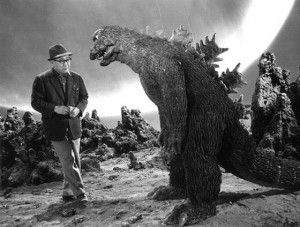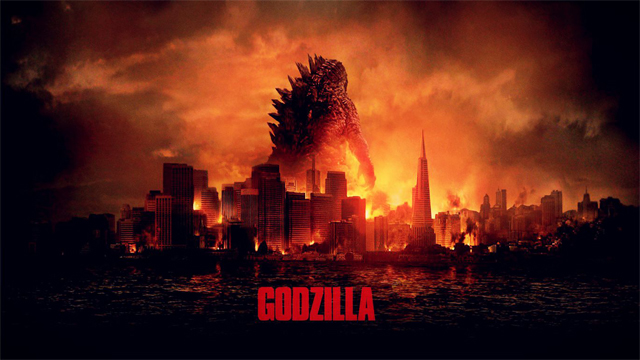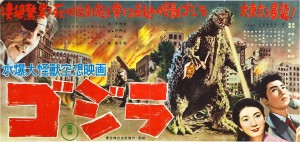Last Friday, the latest Godzilla crushed box offices across the country. Updated for the post-9/11, tsunami-prone era, this latest reboot from Monsters director and relative newcomer Gareth Evans brings epic mayhem to our beloved City by the Bay. Godzilla has lurked beneath our seas for ages, surfacing now and again to wreak havoc, punishing us for our sins, reminding us that we are not the ones in charge. We keep rebooting Godzilla, inviting him back to rampage again and again, like a soured affair we can’t break off. We like it that way; we get satisfaction from feeling guilt.
Victim fantasy and guilt has played a role in monster movies since the beginning. In 1954, director Ishirō Honda devised a monster to represent the dangers of the atomic age by making "radiation visible." Named Gojira, Honda's creation turned into a Toho Studios franchise, destroying Tokyo again and again. Honda's more generalized meaning notwithstanding, Gojira's decimation of fishing vessels and attacks on Tokyo can only be inferred as U.S. actions (intentional and unintentional) against Japan.
The nuclear attack on Hiroshima and Nagasaki in 1945 marked the shocking start of the Atomic Age. Lesser known is that in 1954, during the U.S.' Operation Castle program, the most powerful thermonuclear warhead to date was detonated at Bikini Atoll on March 1. Due to miscalculations, the bomb was bigger than expected. Significant radioactive fallout ash was blown well beyond the declared safety zone, snowing down upon nearby islands and a Japanese tuna boat, Daigo Fukuryū Maru, or “Lucky Dragon.” The ship's crew was morbidly contaminated, and some members died later that year. The U.S. tried to cover up involvement; Atomic Energy Commission head Lewis Strauss accused the Lucky Dragon of spying for the Soviet Union. During this same time, in a secret hearing, Strauss was muckraking the career of J. Robert Oppenheimer, father of the atomic bomb, to ruin. Then as now, secrets were federal currency, and Evan's opening credits sequence in the new Godzilla cleverly illustrates this with a motif of redacted documents.

Toho Studios' producer read about the Lucky Dragon incident in the news, and set out to make a monster movie. Originally octopus-like, Gojira's reptilian design was derived from the successful 1953 Hollywood flick The Beast from 20,000 Fathoms, a monster closer to the realm of the anthropomorphic. The Tyrannosaurus Rex-like Beast, imagined by Ray Bradbury and designed by Ray Harryhausen, was thawed from arctic hibernation by a nuclear blast and traveled underwater seeking vengeance along the eastern seaboard. Gojira would trade stop motion, for a man in a rubber suit, trudging with a different kind of menace. Rising from the depths of Tokyo Bay, his arms flail in the waves as if mere presence is his enemy, the cause of his anger. When asked if there is a way to kill Gojira, Professor Yamane responds, "Instead, we should focus on why he is still alive."



